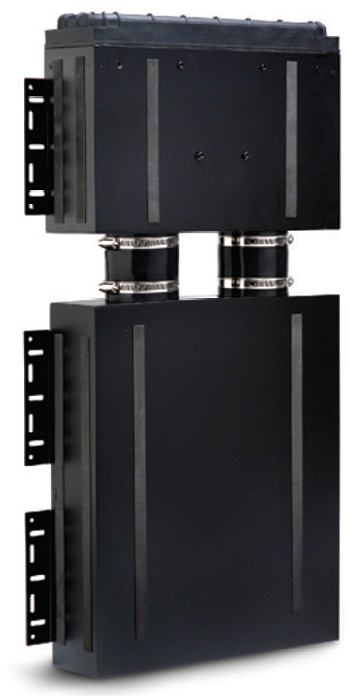|
|||||||||
|
Introduction Customers want speakers that they can mount flat to a wall, or even better, hide in a wall or ceiling. For a company like Velodyne, renowned for the aptly named "1812"
and Digital Drive series subwoofers, the challenge was to meet the demands
of the market and still produce a subwoofer worthy of the Velodyne name.
Their solution is the SC-IW, short for the Subcontractor Series-In-Wall
subwoofer. With the Velodyne SC-IW, the answer is amazingly well. However, with an in-wall subwoofer, no matter how rigorous the attempt to create a closed, braced, and damped speaker box, a significant amount of sound pressure will excite the wall at the rear of the enclosure. This has
two detrimental effects: 1) sound waves will reflect off the rear of the
enclosure back towards the driver, interfering with accurate sound
reproduction; 2) if the speaker is installed in a common wall, sympathetic
vibrations from the speaker box will turn the wall on the opposite side of
the enclosure into a speaker. Even if there is no common wall, the
vibrations still interact within the wall space, creating unknown acoustic
impacts. The driver is housed in a separate enclosure from the speaker box, connected with two sections of large rubber hose. Due to fire codes, the SC
in-walls are passive speakers, with the
SC-1250 amplifier located outside
the wall. Here is a photo of the driver in its enclosure and the second enclosure that is connected to the first with a hose.
The other main design limitation of in-wall subs, and the SC-IW design in particular, is that you can only move so much air within the physical limitations of the driver and the internal space provided by the wall cavity. It's important to understand that in-wall subs are not intended to compete size-for-size and dollar-for-dollar with stand-alone subwoofers. Velodyne is very up-front about this (as they told me while helping move my Hsu Research VTF-3HO w/ Turbo out of the room). If space isn't an issue, you're going to get more thump-for-the-buck by purchasing one of their "Digital Drive" series subwoofers and placing it in a corner. In other words, if you're one those "I can get 104 dB at 18 Hz from my listening position!" guys, in-walls are not for you. However, if for space and/or aesthetic reasons, an in-room sub (or subs) isn't in the picture, then you can expect a pair of SC-IW's to provide similar impact as a pair of Velodyne SC-10 ten-inch freestanding subwoofers powered by the same SC-1250 amp.
|
|||||||||


 plane
as the structural wall stud members, which are much less prone to resonance
and sympathetic vibration than drywall. This design also means less
bleed-through to the adjoining space, and the ability to reproduce lower
frequencies without shaking the drywall off of the studs!
plane
as the structural wall stud members, which are much less prone to resonance
and sympathetic vibration than drywall. This design also means less
bleed-through to the adjoining space, and the ability to reproduce lower
frequencies without shaking the drywall off of the studs!


